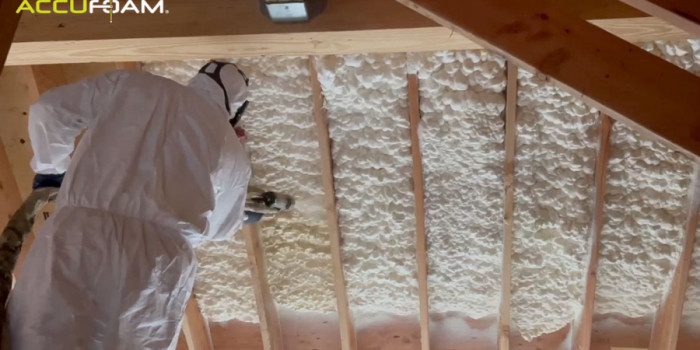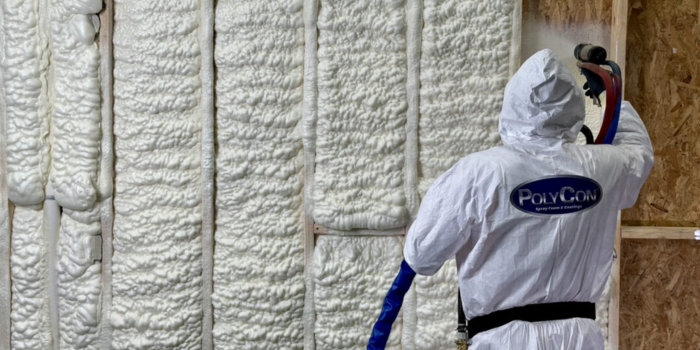Mastering Spray Foam Insulation in Cold Winter Weather
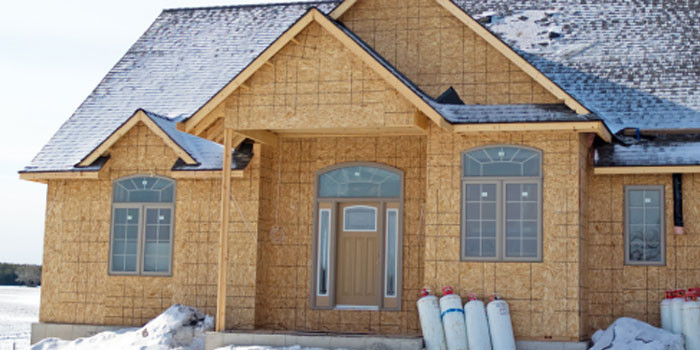

Spray Foam Magazine – Winter 2024 – As we transition into the colder months, spray foam insulation contractors face a new set of challenges brought on by frigid temperatures. However, with proper preparation and techniques, achieving excellent results is still possible even in the harshest winter conditions. This article will delve into the best practices and professional tips for installing spray foam insulation during cold weather, covering crucial aspects such as safety measures, material management, equipment considerations, application methods, project timing, substrate preparation, moisture control, and quality assurance. By implementing these strategies, contractors can ensure successful installations and client satisfaction, even when temperatures plummet.
Safety Precautions: Cold weather installations demand specific safety protocols. Ensure your team is equipped with proper cold-weather gear, including insulated boots, thermal gloves, and layered clothing. Establish a buddy system to monitor each other for signs of hypothermia or frostbite, such as uncontrollable shivering, slurred speech, or blue-tinted skin. Set up warm-up stations with hot beverages and portable heaters for regular breaks. Conduct daily briefings on cold weather risks and emergency procedures and keep a well-stocked first aid kit on-site at all times.
Material Storage and Handling: Effective material management is crucial in cold conditions. Store spray foam components in a temperature-controlled environment, preferably above 50°F (10°C), to maintain optimal viscosity. When transporting materials to job sites, use insulated containers or electric blankets to prevent temperature drops. Implement a rotation system to ensure materials are used within their recommended shelf life, as extended exposure to cold can affect chemical properties. Before application, gradually warm the components to the manufacturer’s specified temperature range, using indirect heating methods to avoid hot spots or uneven warming.
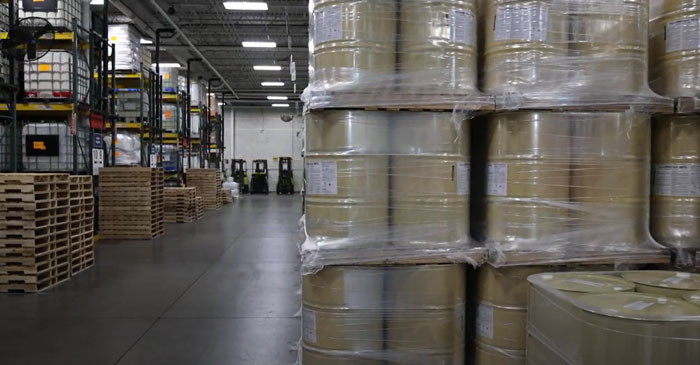
It is important to store spray foam components in a temperature-controlled environment.
Equipment Adjustments: Cold temperatures necessitate equipment modifications. Increase the temperature settings on your proportioner and hoses to compensate for heat loss during application. Install additional insulation on hoses and fittings to maintain consistent material temperatures. Incorporate a recirculation system to keep materials flowing and prevent stagnation in cold pipes. Regularly inspect and clean spray guns, as cold weather can cause material buildup and affect spray patterns. Keep spare parts on hand, as cold weather can increase the likelihood of equipment failure.
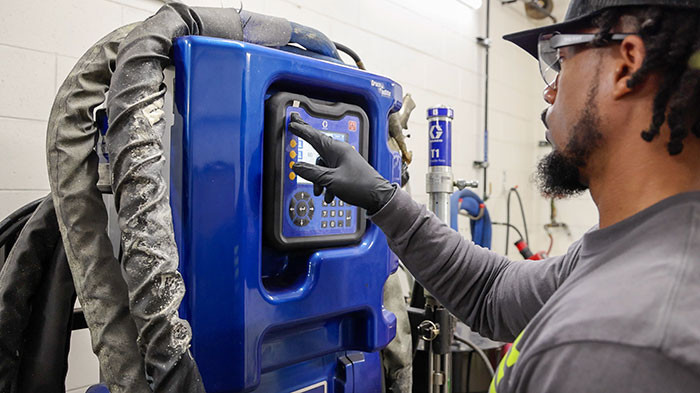
Cold temperatures necessitate equipment modifications.
Application Techniques: Adapt your spraying methods for cold weather conditions. Reduce the distance between the gun and substrate to minimize heat loss during application. Apply foam in slightly thicker passes to generate more exothermic heat but be cautious not to exceed manufacturer recommendations. Use a crosshatch pattern to ensure even coverage and proper bonding. In extremely cold conditions, consider pre-heating the substrate with radiant heaters to improve adhesion and curing. Be prepared to adjust your technique based on real-time temperature and humidity readings.
Timing and Scheduling: Strategic scheduling is essential for winter installations. Plan your work around the warmest parts of the day, typically between 10 AM and 3 PM. Monitor weather forecasts closely and be prepared to reschedule if extreme cold or winter storms are predicted. Allow for extended curing times between passes, as cold temperatures slow down the chemical reaction. Consider using fast-reacting formulas designed for cold weather applications to reduce overall installation time. When possible, create temporary enclosures or use portable heaters to maintain a controlled environment for application and curing.
Substrate Considerations: Cold weather significantly impacts substrate conditions. Thoroughly inspect surfaces for frost, ice, or condensation before application. Use heat guns or warm air blowers to remove moisture and raise surface temperatures above the dew point. Pay special attention to metal surfaces, which can become extremely cold and affect foam adhesion. In some cases, applying a primer formulated for cold weather use can improve bonding on challenging substrates. Always verify substrate temperature with an infrared thermometer before beginning application.
Moisture Management: If you intend to heat your workspace, be conscious of introducing moisture into the substrate. Utilize winter formulations of spray foam designed specifically for applications in lower temperatures. Be mindful of the heat sink characteristics of substrate or material you are spraying against. When insulating exterior walls, ensure that the building envelope is properly weatherproofed to prevent water intrusion during freeze-thaw cycles.
Quality Control: Maintaining high standards in cold weather requires vigilant quality control. Conduct frequent density checks and adhesion tests throughout the installation process. Use thermal imaging cameras to identify cold spots or areas of incomplete coverage. Take core samples to verify proper cell structure and expansion. Document all environmental conditions, equipment settings, and application parameters for each job. Implement a post-installation inspection process to ensure that the foam has cured properly and is performing as expected. By prioritizing quality control, contractors can build a reputation for excellence in cold weather installations.
Installing spray foam insulation in cold weather presents unique challenges, but with proper planning and execution, contractors can achieve outstanding results. By focusing on safety, material handling, equipment optimization, and refined application techniques, professionals can ensure high-quality installations even in the coldest conditions. Adaptability and attention to detail are key to success in these demanding environments. By following these best practices, spray foam insulation contractors can confidently tackle projects during the winter months, delivering energy-efficient, comfortable, and durable solutions to their clients.
Contact Enverge If you have any questions about any of Enverge’s spray foam products or services: 713-239-0252 // EnvergeSprayFoam.com
Spray Foam Magazine does not take editorial positions on particular issues; individual contributions to the magazine express the opinions of discrete authors unless explicitly labeled or otherwise stated. The inclusion of a particular piece in the magazine does not mean that individual staff members or editors concur with the editorial positions represented therein.
Disqus website name not provided.






